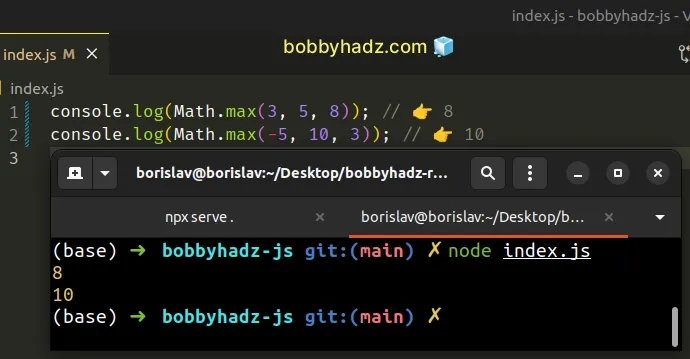Check if DST (Daylight Saving Time) is in Effect using JS
Last updated: Mar 6, 2024
Reading time·2 min

# Check if DST (Daylight Saving Time) is in Effect using JS
To check if DST (Daylight Saving time) is in effect:
- Create 2 dates - 1 in January and 1 in July.
- Use the
getTimezoneOffset()method to get the timezone offset for the 2 dates. - Check if the greater of the two values is not equal to the offset for the original date.
function hasDST(date = new Date()) { const january = new Date( date.getFullYear(), 0, 1, ).getTimezoneOffset(); const july = new Date( date.getFullYear(), 6, 1, ).getTimezoneOffset(); return Math.max(january, july) !== date.getTimezoneOffset(); } // 👇️ 1st of February 2022 console.log(hasDST(new Date(2022, 1, 1))); // 👉️ false // 👇️ 1st of September 2022 console.log(hasDST(new Date(2022, 8, 1))); // 👉️ true

We created a reusable function that takes a Date object as a parameter and
returns true if DST (Daylight Saving Time) is in effect and false otherwise.
We created 2 Date objects - 1 in January and the other 1 in July.
The 3 parameters we passed to the Date() constructor are:
- The
year - A zero-based value for the month (January = 0, February = 1, etc)
- The day of the month (1 - 31)
The getTimezoneOffset() method returns the difference, in minutes, between a date (evaluated in UTC) and the same date evaluated in the visitor's local time zone.
For an area where DST is observed, the offset the getTimezoneOffset method
returns for January will be different from the one returned for July.
getTimezoneOffset method returns a greater value during Standard Time than during Daylight Saving Time.The Math.max() function takes two or more comma-separated numbers and returns
the max value.
console.log(Math.max(3, 5, 8)); // 👉️ 8 console.log(Math.max(-5, 10, 3)); // 👉️ 10

Therefore, the Math.max() function will return the value that is during
Standard time.
The last step is to compare the value during Standard Time to the output from
calling the getTimezoneOffset method on the passed-in date.
If the two values are equal, then the date matches the standard offset and Daylight Saving time is not observed.
# Additional Resources
You can learn more about the related topics by checking out the following tutorials:

